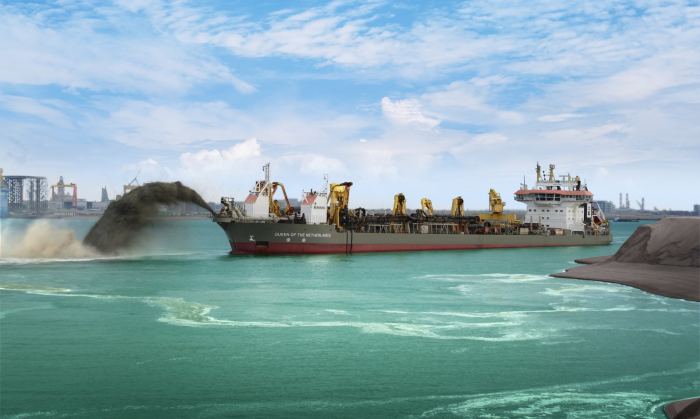In the past decade, offshore wind farms have been developed at a rapid pace. During this period, Boskalis contributed to the construction of more than 150 wind farms worldwide, including Taiwan’s offshore wind farms Changfang & Xidao and Yunlin. One of Boskalis’ key players in Taiwan was subsea rock installation vessel Seapiper: an indispensable “road builder” in the global road to Net Zero.
For more than twenty years, the Seapiper sailed the world’s oceans with heavy offshore platforms and structures. Although the Seapiper has only been operating as a subsea rock installation vessel since May 2023, the vessel already had a full-fledged offshore career under its previous name Fjell. But the series of impressive transports came to an end when Boskalis decided to convert the vessel into a state-of-the-art subsea rock installation vessel. The reason behind this major conversion project was simple: the increasing demand for rock installation in offshore wind farms. Subsea rock installation plays a vital role in shoring up the subsea infrastructure, which is inextricably linked to the many thousands of offshore wind turbines. These include leveling and stabilizing the seabed by installing a rock bed, protecting the foundations – both monopiles and jacket foundations – against scour and erosion from the seabed, and rock installation to ensure that the installed array and export cables stay in the right location on the seabed and do not “float” due to currents.
Inclined fall pipe
Our Seapiper is one of the youngest subsea rock installation vessels in the industry and can be compared to an indispensable paver and “road builder” at sea. Where similar vessels are characterized by a large fall pipe tower in the center of the vessel, the Seapiper and also our Rockpiper and future Windpiper (see separate text box) have a unique feature. They are equipped with not one, but two fall pipes. Besides the regular fall pipe in the heart of the vessel, they also have a so-called inclined fall pipe. That is a fall pipe installed on the back of the starboard side on the vessel that allows the Seapiper to install rocks at a certain angle around already installed structures very precisely. This allows the Seapiper to do an outstanding job in both newly developed and existing offshore wind farms.
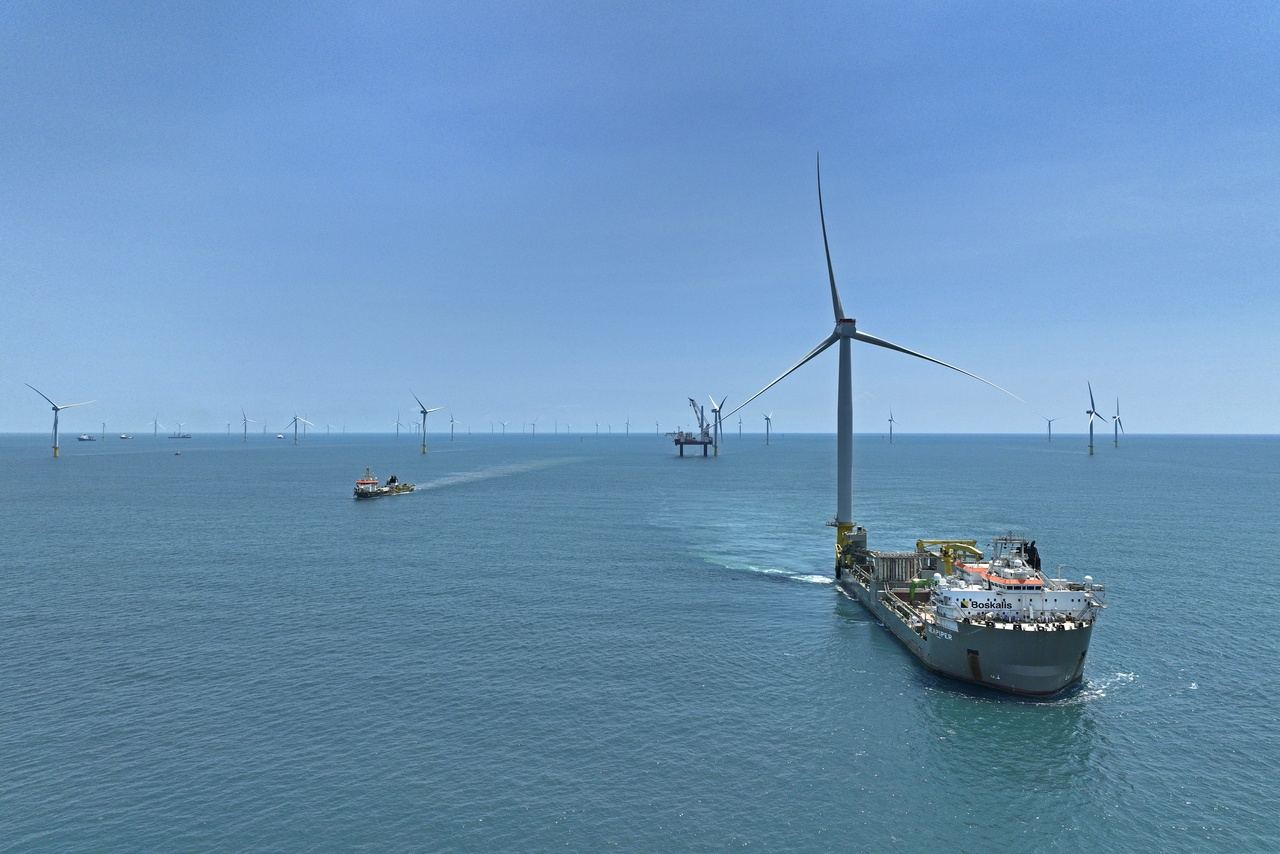
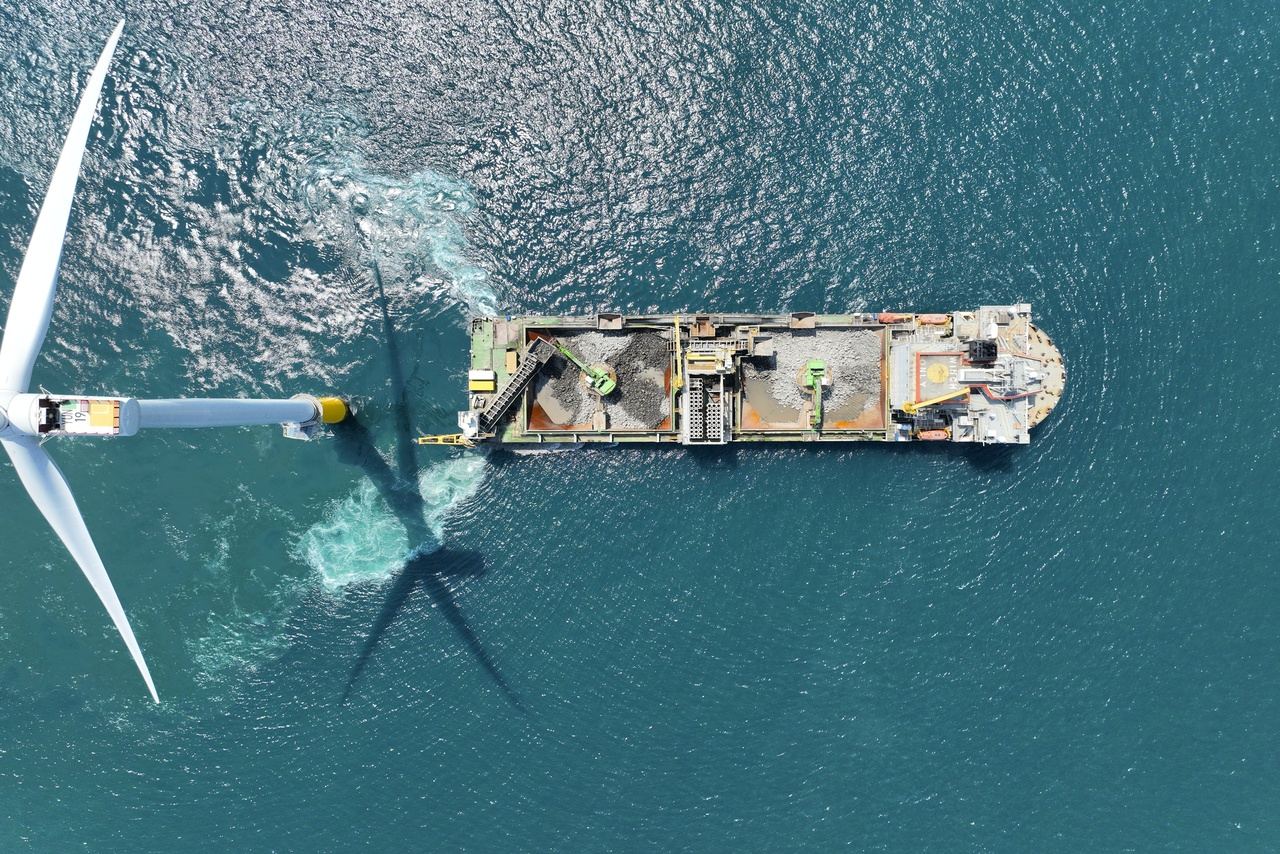
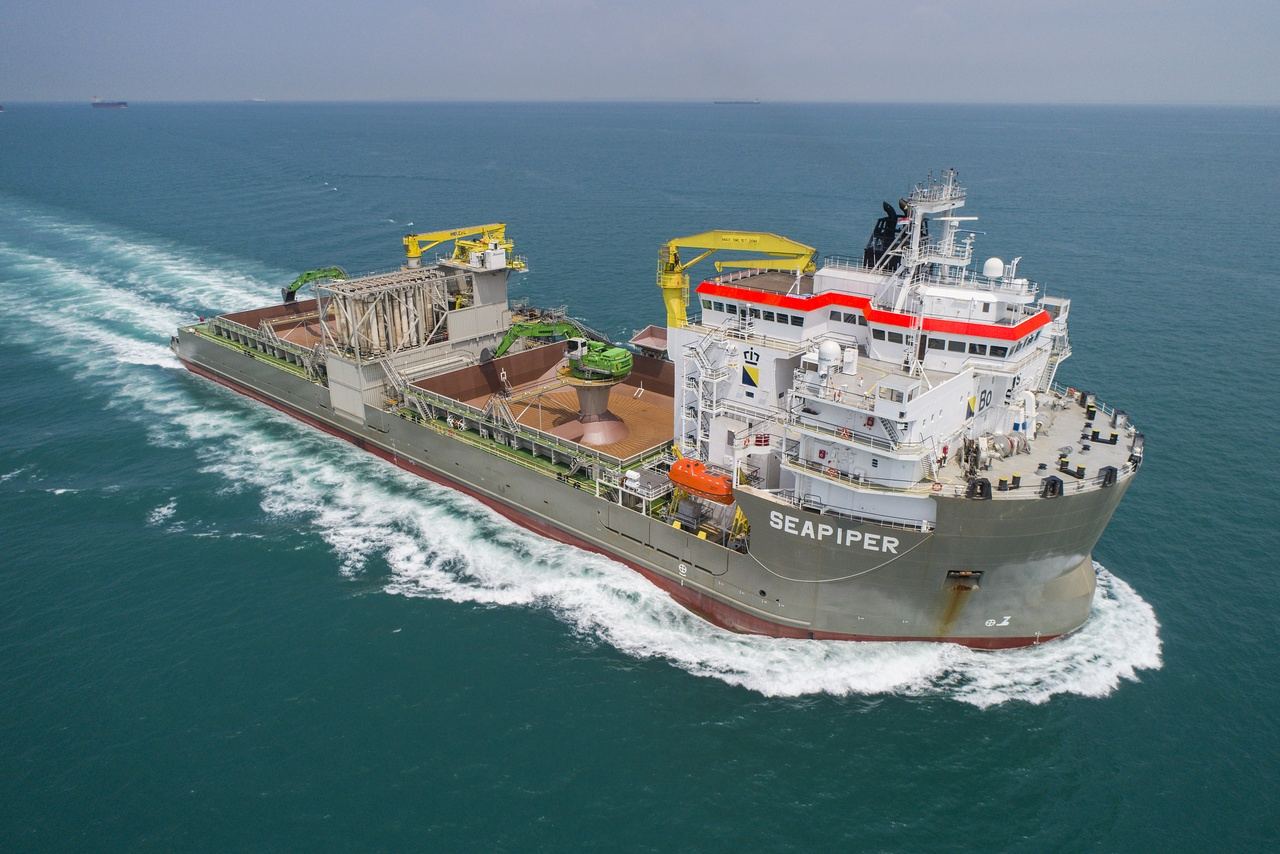
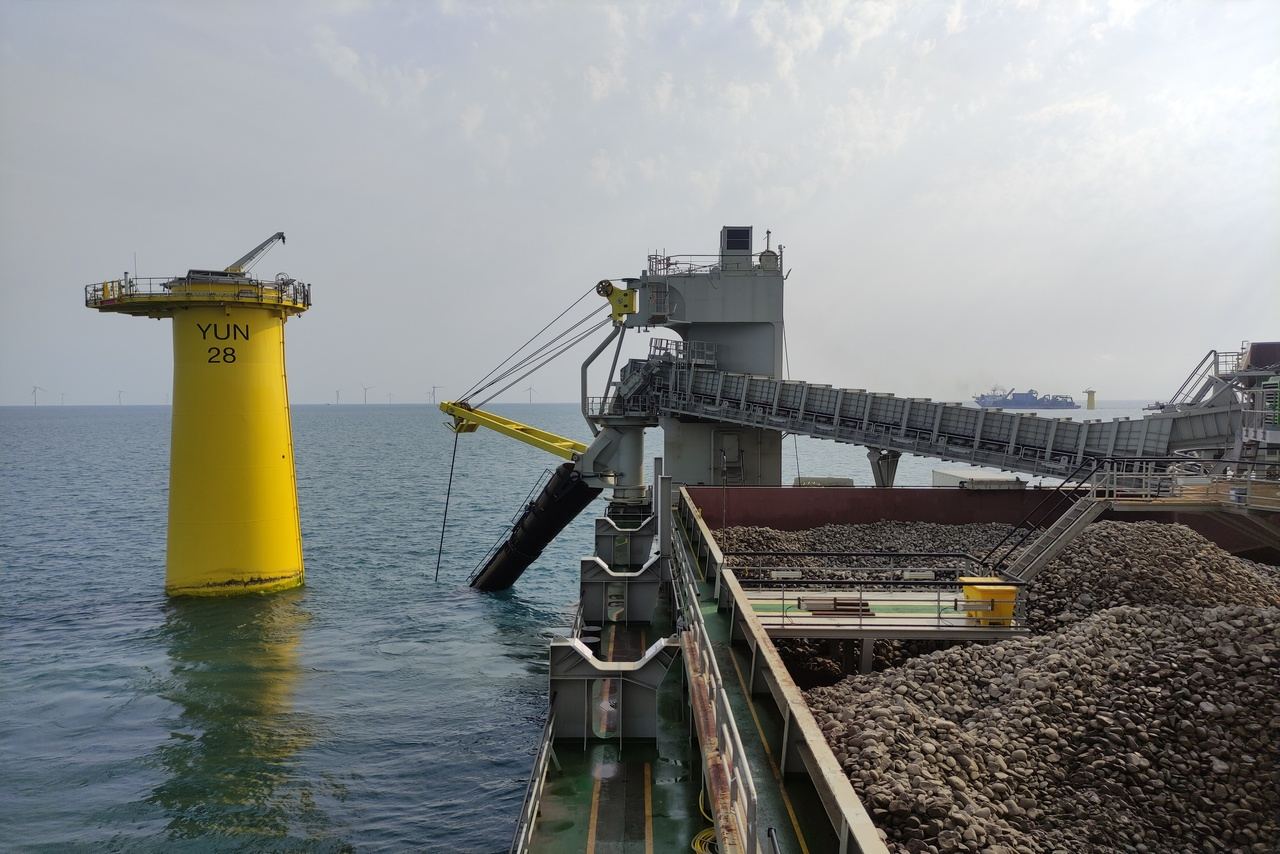
“Thanks to an advanced multi-cylinder mechanism, this fall pipe can rotate to an angle of no less than 225 degrees. That is impressive and unmatched in the industry,” says Captain Rob de Lange of the Seapiper. “This allows us to literally reach further than similar vessels also operating in Taiwan, and it also gives us much more flexibility during rock installation for an offshore wind farm.”
2,000 tons of rock per hour
With two years of experience in Taiwan and Australia, a first assessment of the vessel can be made. The figures speak for themselves: the Seapiper is capable of installing about 2,000 tons of rock per hour to a maximum depth of 500 meters below the surface. With the inclined fall pipe, which can vary in length between 23 and over 50 meters, rock can be accurately installed to a depth of about 70 meters. “With this fall pipe, we are one of the few vessels in the world able to work close to offshore foundations and install rocks at the requested location with precision,” says Captain De Lange.
Yunlin offshore wind farm
That precision was on display at Taiwan’s Yunlin offshore wind farm. At installation depths ranging between 12 and 32 meters, rocks were installed literally a stone’s throw from the monopiles. During this challenging project, the rocks had to be precisely installed in both naturally formed and artificially dredged trenches and holes. The armour rock used in this project had a weight of between 60 and as much as 300 kilograms. After an intensive and successful season in 2024 – during which Boskalis also deployed four other vessels like trailing suction hopper dredger Shoreway and our water injection dredger Terra Plana – the final phase of the Yunlin project was recently successfully completed.
